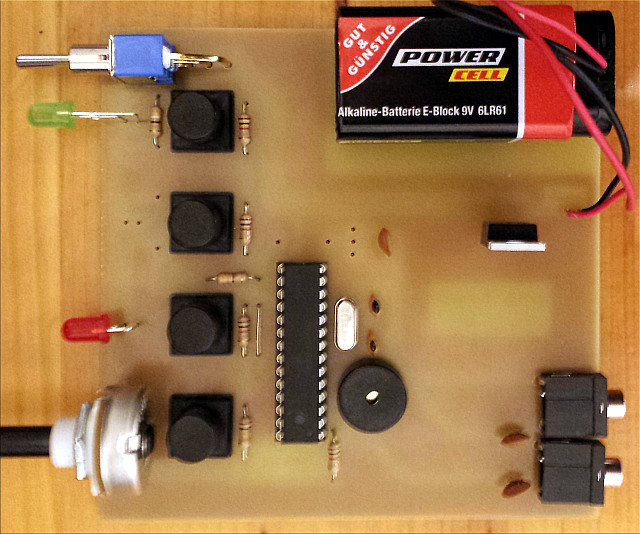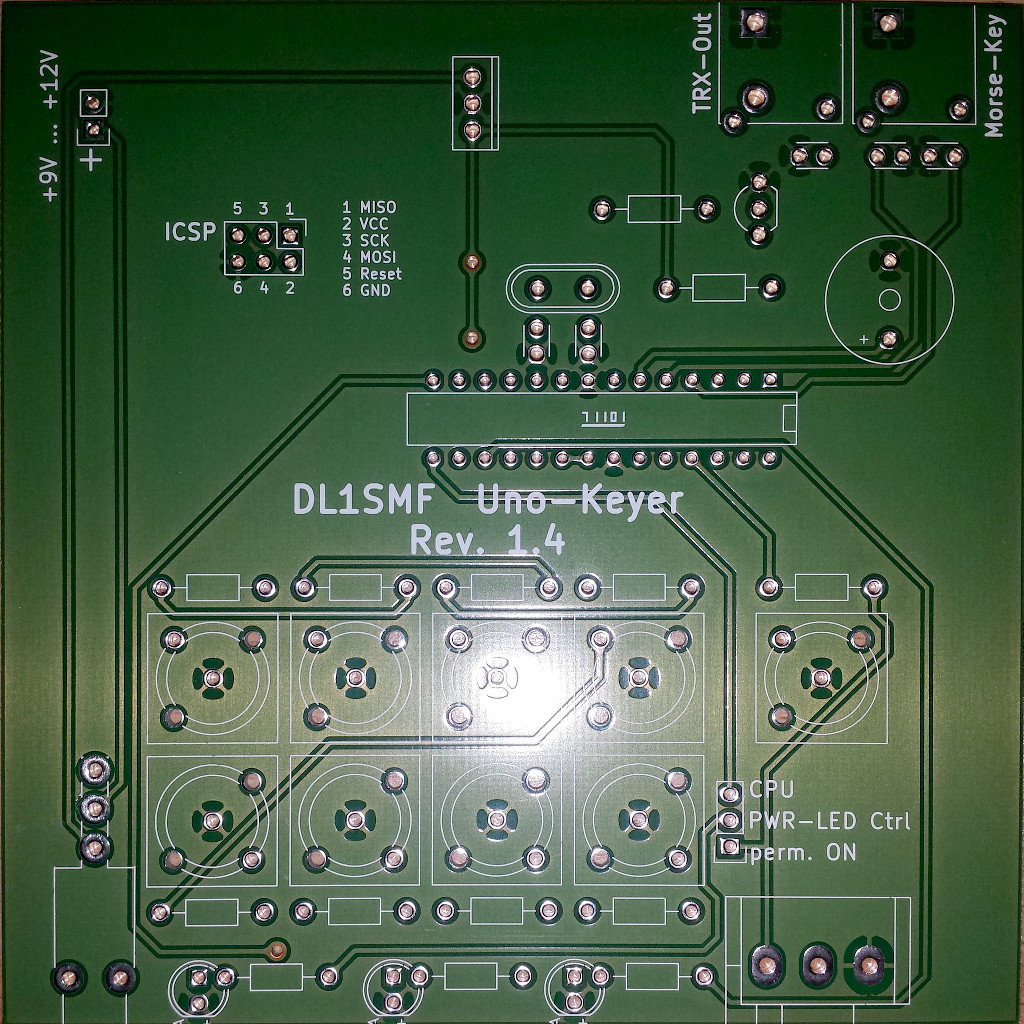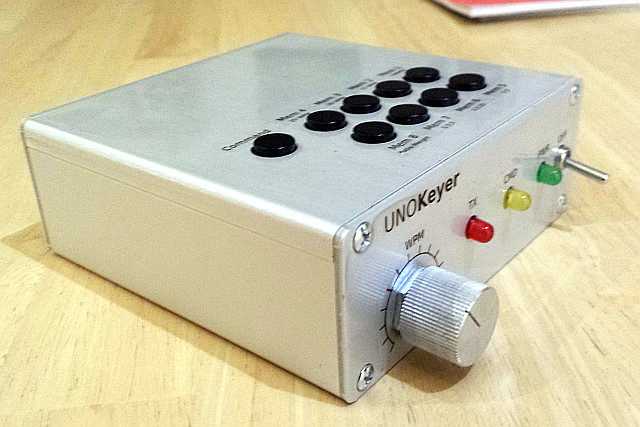When I decided to start practising "the code", I thought that I wouldn't use a clumsy external keyer. I thought I just would need the internal one in my TS-480HX transceiver.
Especially after reading the transceivers documentation I felt that having another box on the desk wouldn't be a tempting idea at all. The documentation sounded like the build-in keyer would be the top-notch of luxury, the holy grail of all available cw-keyers. ;-)
Well, it was... to some degree. It had three memories, key weighting and a speed-range seemingly made for eternity. Unfortunately there was a minor glitch with that keyer. Sometimes it added spurious "dah"s to my characters, where I didn't even touch the dah-side of the paddle. In the beginning I was unsure. Hey, I was a beginner (I'm still a beginner, BTW...). Was it my fault? But why didn't this happen on external keyers or on other transceivers using their internal keyers? I wanted to take part at the next beginners net on 80m. The last one had been by far too much fun to miss this one.
But what now? I felt really reluctant in using the internal keyer again, which nearly made my transmission an even bigger mixed salad of letters than ever before. Hmm, don't I have that Arduino-board somewhere in one of my drawers? Nope, can't find it, but I got a breadboard and this spare ATmega328, an xtal and my programmer and...
OK, this should be able to do the job. I was a little bit in a hurry, so I didn't even ask Old Aunt Google for a ready-made Arduino-CW-keyer firmware. I just wrote my own. Twenty ugly lines of code some digital duct-tape and it worked like a charm without loosing symbols and without adding them. It was a pleasure to work with. And I did so for many weeks. None the less, the design -- while being, say, extraordinary for a CW-Keyer -- clearly left something to be desired:

So I whipped something up again. Something more decent -- expecting to use this for all eternety. I planned to put this into a nice housing some day and played a lot with the firmware. Hmm,... seems like I forgot an ICSP-header:

While generally working well, I noticed some limitations: This little beast drained the battery somewhat too quick and it only had four buttons. When using some sort of deep-sleep power-savings with it, I only could wake it, when sending a dah. I couldn't wake it sending a dit. Because I didn't think of sending this thing to sleep, ever, I just had chosen an easy to reach pin but not one with IRQ-capabilities. This was clearly not a good idea. OK, time for Take three (and four and...): During the design of take three I noticed the presence of K3NG's super-feature-rich firmware for Arduino-based CW-Keyers (you'll find it, if you follow this link.). His firmware has a whole lot of features. By far more than my own and so I planned to abandon my own firmware. I had not much time for the board-redesign, now, so why not just use one of the hardware-solutions Anthony mentions on his homepage? The "nano-keyer" or the "Open CW-Keyer"? Just stopping this, buying one of these, flashing Anthony's firmware and here we go with ease? Well, all these only had four buttons. One Command and three memory-buttons. The Open CW-keyer had them even on the front. Clearly a very suboptimal location for the memory and function-keys of a CW-keyer in such a small housing. The nano-keyer however at least had the buttons on it's top. But again: only four buttons. And for being prepared to use some features I just do not want (WinKeyer, PC-Keyboard,...) it uses a pre-manufactured Arduino nano board, requiring a power-supply instead of batteries. OK, while this all was well thought out, it clearly just was not, what I wanted. So back to KiCad again finishing the fourth attempt (the third one was never built)...

This time it got an ICSP-header, five more buttons (so we have 8 MEM/FUNC Buttons, now), a less power-consuming regulator and a Jumper, so it's compatible with both, my firmware (which does contorl the Power-LED by itself) and Anthony's K3NG-Keyer-Firmware which currently can't do that -- but maybe he will implement it some day. After having used this for a while now, I noticed the regulator did work better if having some larger buffer-caps (the manufacturers documentation says it will work fine without, but it get's instable if the battery reaches 6.5 - 7 Volts. The housing was an open question, still. I must admit, that I liked the Fischer aluminium-housing which was used for the nano-keyer so much, that I shamelessly used it, too. So, this is why the finished Keyer looks so much like being a nano-Keyer:
